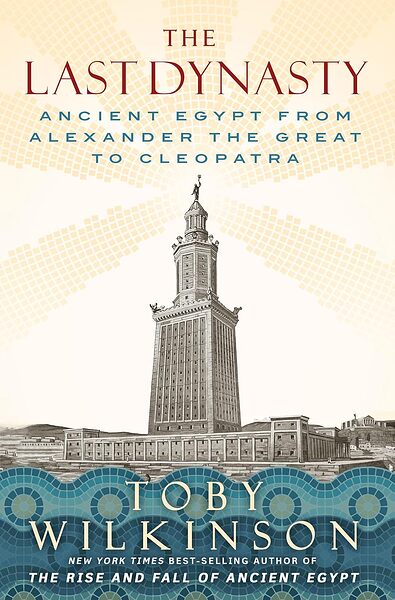Looking for a good read? Here is a recommendation. I have an unusual approach to reviewing books. I review books I feel merit a review. Each review is an opportunity to recommend a book. If I do not think a book is worth reading, I find another book to review. You do not have to agree with everything every author has written (I do not), but the fiction I review is entertaining (and often thought-provoking) and the non-fiction contain ideas worth reading.
Book Review
The Ptolemies in Egypt
Reviewed by Mark Lardas
April 20, 2025
“The Last Dynasty: Ancient Egypt from Alexander the Great to Cleopatra,” by Toby Wilkinson, W. W. Norton & Company, April 2025, 384 pages, $37.99 (Hardcover), $36.09 (E-book), 17.49 (Audiobook)
Egypt’s civilization started over 3000 years before Christ. Its final rulers as an independent ancient era state are the best known today, the Ptolemies. Most today believe they were Egyptian. They were foreigners, Greek conquerors imposed on Egypt, using Egyptian religion and custom to obtain acceptance.
“The Last Dynasty: Ancient Egypt from Alexander the Great to Cleopatra”, by Toby Wilkinson, tells their story. It follows the Ptolemies’ 335-year reign from the inception of their reign to its conquest by Rome.
Wilkinson shows how Alexander the Great conquered Egypt. Egypt had been run by Persia, which reconquered it a decade earlier. The canny Alexander claimed he liberated Egypt, not conquered it. He restored its independence, making himself pharaoh. He also founded a new port on Egypt’s coast, Alexandria.
The Egyptians accepted Alexander, especially since Alexander defeated Egypt’s previous leader, the Persian Darius. Conquest was the traditional method of becoming pharaoh. Moreover, Alexander reestablished the primacy of traditional Egyptian religions, restored trophies seized by Persia, and had Egyptian priests him invested as pharaoh.
After Alexander’s death, his companion Ptolemy, slipped into Alexander’s place. Ptolemy had been Egypt’s satrap. Ptolemy took Alexander’s body to Memphis, buried it alongside previous pharaohs and declared himself pharaoh, Ptolemy I Sotor.
Wilkinson takes the story from there. He shows how Ptolemy I maintained an uneasy balancing act against Alexander’s other companions, while getting Egypt established as an independent nation under his rulership. This set the stage for the next 300 years.
The Ptolemies established Egypt as a hybrid state, fusing Hellenistic and traditional Egyptian cultures. The Ptolemies were Greek kings (basileus) as well as pharaohs. They layered Greek and Egyptian religions together, creating a new Grecco-Egyptian god, serapes.
They also made Alexandria a cultural and commercial hub. They made it the Mediterranean’s greatest seaport and trading center, building the Great Lighthouse of Pharos. They established the Museum and the Great Library, transforming Alexandria into the Mediterranean’s intellectual center. They expanded Egypt’s borders, taking Cyprus, and conquering Africa as far west as modern Libya and as far south as the Second Cataract.
Wilkinson traces their 150-year decline, following the feckless leaders of the last half of the dynasty, and its brief revival under Cleopatra. Yet Rome prevailed, ultimately conquering Egypt in 30BC. “The Last Dynasty” is absorbing reading. It often reads like a novel. Yet it is meticulously-researched history. Anyone interested in ancient history will like it.
Mark Lardas, an engineer, freelance writer, historian, and model-maker, lives in League City. His website is marklardas.com.
